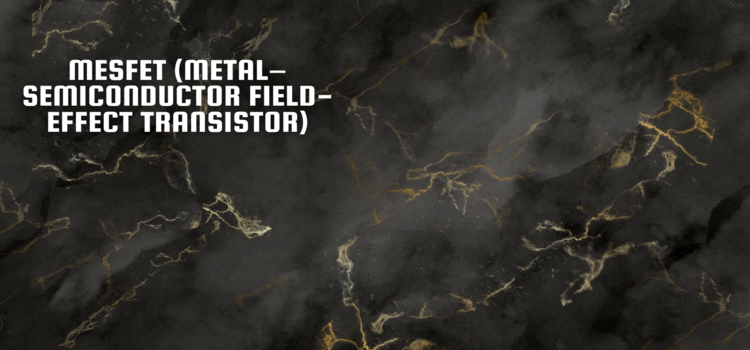A MESFET, short for metal-semiconductor field-effect transistor, is a type of semiconductor device that operates similarly to a JFET. However, instead of using a p-n junction for its gate, it utilizes a Schottky junction made of metal and semiconductor materials.
MESFETs are made using compound semiconductor technologies such as gallium arsenide, indium phosphide, or silicon carbide, which do not have high quality surface passivation. They are faster than JFETs or MOSFETs based on silicon, but are also more expensive. These MESFETs can operate up to around 45 GHz and are frequently used in microwave frequency communications and radar. The initial MESFETs were created in 1966 and within a year, their exceptional high frequency RF microwave performance was demonstrated.
The MESFET, like the JFET, is distinct from the typical MOSFET or insulated-gate FET because it lacks an insulator beneath the gate in the active switching area. As a result, when in transistor mode, the MESFET gate must be biased in a way that creates a reversed-biased depletion zone to regulate the underlying channel, rather than a forward-conducting metal-semiconductor diode to the channel.
MESFETs are capable of functioning well for both analog and digital devices, as long as they are designed within certain limits. However, there are restrictions on circuit possibilities due to the gate being reverse-biased and unable to exceed a certain voltage of forward bias. The gate metal extent over the switching region is a critical aspect of the design, with narrower gate modulated carrier channels providing better frequency handling abilities overall. While the spacing of the source and drain with respect to the gate, and the lateral extent of the gate are important design parameters, they are somewhat less critical. Increasing the lateral elongation of the gate can improve MESFET current handling ability, but is limited by phase shift along the gate due to the transmission line effect. To address this, most production MESFETs use a built-up top layer of low resistance metal on the gate, which often results in a mushroom-like profile in cross section.
A MESFET is composed of a single ultrathin semiconductor layer that is lightly n-doped and is referred to as the channel. This channel is etched onto a semi-insulating substrate that has heavily-doped semiconductors on both ends, which are known as the source and drain. The top portion of the channel is covered with metal, which forms the Schottky junction between the two terminals and also serves as the gate terminal. When the gate is negatively biased, it controls the flow of current in the channel by generating a depletion region that is devoid of charge carriers near the metal-coated gate. This process, known as carrier channel width modulation, restricts the flow of current in the channel.
Many different ways of fabricating MESFETs have been investigated for various semiconductor systems. These devices have found important uses in several fields, including military communication (as a low-noise amplifier for microwave receivers in both radar and communication systems), commercial optoelectronics, satellite communication (as a power amplifier for the output stage of microwave links), and power oscillation.
